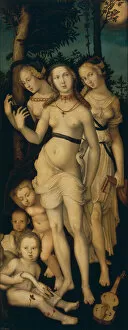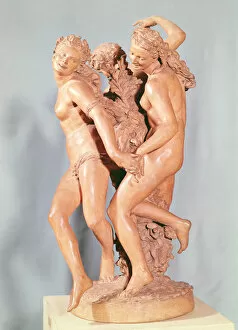Thalia Collection (page 3)
"Thalia, the Muse of Comedy and one of the nine Muses in Greek mythology, has been a timeless inspiration for artists throughout history
All Professionally Made to Order for Quick Shipping
"Thalia, the Muse of Comedy and one of the nine Muses in Greek mythology, has been a timeless inspiration for artists throughout history. From ancient Roman mosaics to Renaissance paintings and modern sculptures, her presence is felt in various artistic masterpieces. In a stunning Roman mosaic from the 3rd-4th century AD found at Torre de Palm, Thalia stands alongside her sister Erato, another Muse associated with love poetry. Their graceful figures and delicate features showcase their divine beauty and influence on creativity. Pieter Paul Rubens immortalized Thalia's enchanting essence in his painting "The Education of the Princess. " Here, she guides Marie de Medici through her journey of learning and enlightenment. Her vibrant presence adds an element of joy to this magnificent piece. Johann Gottfried Schadow captures Thalia's playful spirit in his sculpture "Melpomene and Thalia. " The contrasting expressions on their faces represent tragedy (Melpomene) and comedy (Thalia), showcasing the duality that exists within art itself. Antonio Canova's masterpiece "The Three Graces" portrays these goddesses as symbols of charm, beauty, and elegance. Among them stands Thalia, radiating laughter and happiness as she embodies comedic entertainment. Raphael's fresco "Parnassus" depicts Mount Parnassus as a gathering place for all nine Muses. In this scene from the Stanza della Segnatura, we can spot Thalia among her sisters as they inspire poets with their creative energy. Alfons Mucha pays homage to Thalia's role as the Muse of Comedy in his iconic poster titled "Thalia. " With flowing hair adorned with flowers and a mischievous smile on her face, she captivates audiences with her wit and humor. Rubens once again captures our attention with his painting "The Three Graces, " where he presents these goddesses as embodiments of beauty, charm, and grace.









